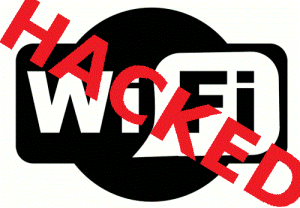Sanjeev Relia writes: Internet has become a necessity for urban daily life. With increasing use of smart phones and other portable mobile devices, more and more people are getting online. Though there are a number of ways to connect these devices to the Internet, Wi-Fi connections are the most economical and fastest means of browsing data. Most offices, academic institutions and even some cities are completely Wi-Fi enabled so that user can conveniently browse the Internet (soon India too will have 100 smart cities). Because of their ever increasing presence, Wi-Fi hotspots have become the biggest targets of hack attacks.
How does a Hacker get Access to Your Wi-Fi Network?
There are a number of ways by which a hacker can gain access to your Wi-Fi network. Hacking has become so easy that even a seven year old girl Betsy Davies in the US was able to break into a Wi-Fi hotspot in less than eleven minutes after watching an online video tutorial. Some of the techniques followed by hackers to gain access into a Wi-Fi network are:-
(a) Sniffing/ Eavesdropping: Passively listening to data on the network without the users’ knowledge by tricking the network into passing all data through the hacker’s computer first.
(b) Man in the Middle Attack: A method used to intercept traffic between a user’s device and the destination system, such as the café offering the Wi-Fi, making a victim’s machine think the hacker’s machine is the access point to the Internet.
(c) DNS Cache Poisoning: A method of attack whereby ‘updated’ data is used to enable the hacker to divert the traffic to the hacker’s destination of choice.
(d) Rogue Access Points: Wireless access points installed on a company’s network without the company’s knowledge. These access points override the legitimate network thereby allowing the hacker to perform a man in the middle attack and intercept data.
(e) Brute Force Attack: A method in which a hacker will try and break the password by continuously attempting to log in with different credentials until they find one that works. It could take hours, days or months depending upon the complexity of the password being used. Dictionary attacks also form part of brute forcing.
Most of us log into free Wi-Fi connections available at public places such as airports, restaurants and Malls. Seldom do we realise that such open networks could be dangerous. The open nature of these networks allows snooping. The worst condition could be that the hotspot itself could be malicious. If we use such a network for secure transactions such as banking or payment for online shopping, we may end up losing not only confidential information but money too. So what does one do to prevent Wi-Fi networks from giving away vital information? Here are some simple techniques which can prevent loss of information:-
(a) Turn off Sharing: Some of us share our music library, printers or files, or even allow remote login from other computers on our Wi-Fi network in the privacy of our own home or office. Unless you disable these settings before connecting to a public Wi-Fi network, anyone else in the vicinity may be able to hack into your device.
(b) Get a VPN: The most secure way to browse on a public network is to use a virtual private network. A VPN routes your traffic through a secure network even on public Wi-Fi, giving you all the perks of your private network while still having the freedom of public Wi-Fi. Both free and paid VPN services are available.
(c) Avoid Automatically Connecting to Wi-Fi Hotspots: Your smart phone may be set to ‘automatically connect mode’ to any available Wi-Fi hotspot. Not only will this allow your device to connect to public networks without your express permission, you may also be automatically connecting to malicious networks set up specifically to steal your information. Turn off this mode.
(d) Use Two Factor Authentication: Two-factor authentication means you need two pieces of information to log into an account: One is something you know and the other is something that the webpage sends you when you are carrying out a login. Most often this is a password and a code sent to your cell phone. Two factor authentication provides you with additional safety, though a malicious Wi-Fi hotspot also can easily setup a two factor authentication.
(e) Turn on Your Firewall: If you are using a laptop, you must have the firewall turned on. Most operating systems include a built-in firewall, which monitors incoming and outgoing connections. A firewall won’t provide complete protection, yet it’s a setting that should always be enabled.
(f) Run Antivirus Software: Always running up-to-date antivirus software can help provide the first alert if your system has been compromised while connected to an unsecured network.
Not connecting to an unsafe open Wi-Fi network would be the best policy to follow. Yet there may be occasions when one ends up logging into such Wi-Fi networks. If you do so, remember that your information is travelling on unsecure media and may fall into wrong hands. Adequate caution must therefore be maintained while logging a device to free public Wi-Fi networks.


